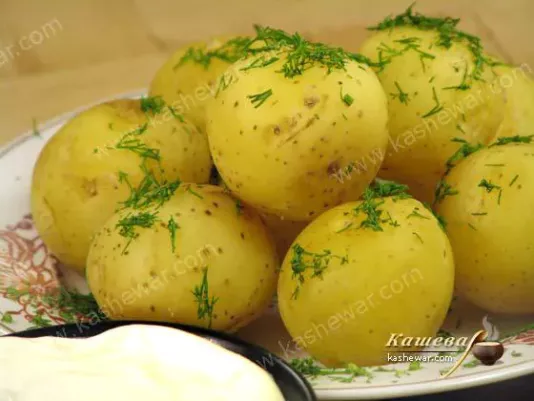Eggs Stuffed with Fish
Eggs stuffed with fish – this is one of the quickest recipes to make.

Belarusian cuisine was shaped by rural lifestyles, a moderate climate, and a limited range of available ingredients. Its foundation is the potato, often called “the second bread,” which is used to prepare dozens of traditional dishes. However, Belarusian gastronomy is not limited to potatoes – it features meat, mainly pork, mushrooms, cabbage, beets, carrots, and grains such as buckwheat and barley. Flavorful combinations are often highlighted by the use of fried onions, garlic, fermented foods, and generous portions of sour cream. The cuisine of Belarus retains time-tested authenticity while being open to influences from Polish, Lithuanian, and Ukrainian traditions. Traditional cooking methods such as baking in a stove, stewing, and slow-cooking in clay pots hold a special place. Each dish reflects the deep connection of Belarusians with the land, seasonal products, and folk customs.
Belarusian recipes are known for their simplicity and accessible ingredients, while still delivering rich flavors. Among the most famous are draniki (potato pancakes), kalduny (potato pancakes with meat filling), babka, zrazy, stewed cabbage with mushrooms, machanka, and kisiel. Many dishes involve finely chopped ingredients – grated potatoes, minced meat, shredded vegetables. This not only simplifies preparation but also provides a dense texture and rich taste. Cooking techniques such as slow frying, stewing, and oven baking play a crucial role in enhancing the flavor of even the simplest ingredients. Special attention is given to festive recipes – with stuffed crepes, dishes with pork cracklings, baked rolls, and homemade pastries. Belarusian dishes convey the warmth of the home, the care of the cook, and respect for labor.
Potatoes are the main ingredient in Belarusian cuisine and appear in nearly every other dish. They are boiled, fried, baked, grated, and used as a base for casseroles, pancakes, rolls, and soups. Especially popular are dishes made from raw grated potatoes, such as draniki, babka, and kletski, which have become gastronomic symbols of the country thanks to their crispy crust and tender interior. Potatoes are often combined with meat or mushrooms, adding substance and depth of flavor. Traditional dishes also include those where potatoes replace dough – for instance, stuffed zrazy. In Belarusian cuisine, potatoes are more than just a vegetable – they represent a culinary philosophy showing how a simple ingredient can yield a rich variety of national dishes.
Pork is widely used in Belarusian cuisine – stewed, fried, or baked. It is often served with vegetable side dishes or as part of more complex meals, such as machanka – a meat sauce served with pancakes or bread. Salo is eaten as a standalone snack or added to porridge, potatoes, or cabbage. Sausages, blood sausage, and salted meats are also popular. In the dairy category, sour cream, kefir, cottage cheese, and butter prevail. Sour cream is added to nearly every dish – as a sauce, dressing, or filling component. Thanks to local dairy production, Belarusian dishes have a creamy note, soft texture, and high level of satiety. The combination of meat, salo, and dairy ensures a balanced diet suited to the moderate climate and high energy needs of traditional rural life.
In addition to potatoes, Belarusian cuisine makes extensive use of grains – buckwheat, barley, millet, and oats. These are used for porridge, casseroles, and pie fillings. Dishes made with rye flour are especially popular, including pancakes, nalistniki, and rye bread. Common vegetables include cabbage, carrots, beets, onions, garlic, as well as wild and dried mushrooms. Fermented foods play an important role: sauerkraut, pickled cucumbers, and apples are eaten as standalone dishes or as components of soups, sides, and meat dishes. Fermentation is a traditional method of preserving vegetables for winter, while also enhancing their taste and nutritional value. With its use of grains, vegetables, and fermented ingredients, Belarusian cuisine remains hearty, balanced, and closely connected to the natural rhythms of life.
Although desserts are not a major focus in Belarusian cuisine, there are notable sweet traditions. Popular treats include syrniki, nalistniki with cottage cheese and honey, rye pies with berries, and fermented gingerbread. These traditional desserts are made from readily available ingredients – cottage cheese, berries, honey, and flour. Many have a simple appearance but a pleasant homemade taste, often with a touch of tartness or spice. Common beverages include kvass, uzvar, kissel, and herbal teas. Uzvar is made from dried apples, pears, and plums with added honey. Kvass is not only a refreshing drink but also a base for cold soups. Teas made from mint, St. John's wort, and linden are a traditional way to end a meal. Milk and fermented dairy drinks are also consumed in their natural form. The beverages of Belarusian cuisine reflect the same care for health and respect for seasonality as the entire culinary tradition.